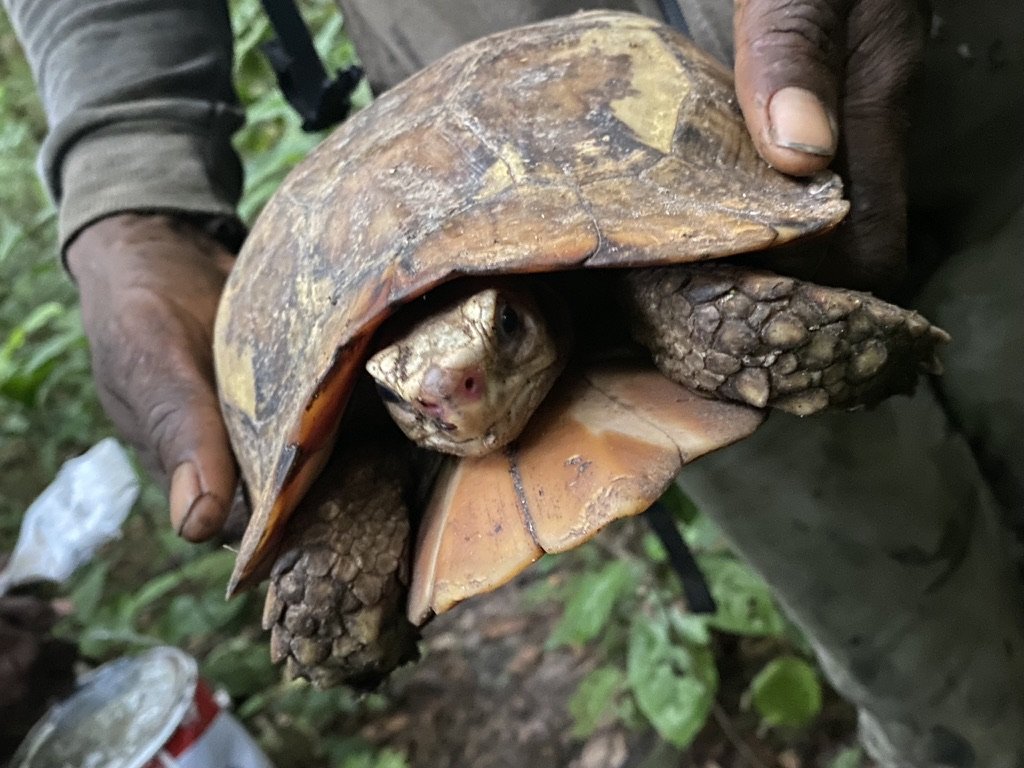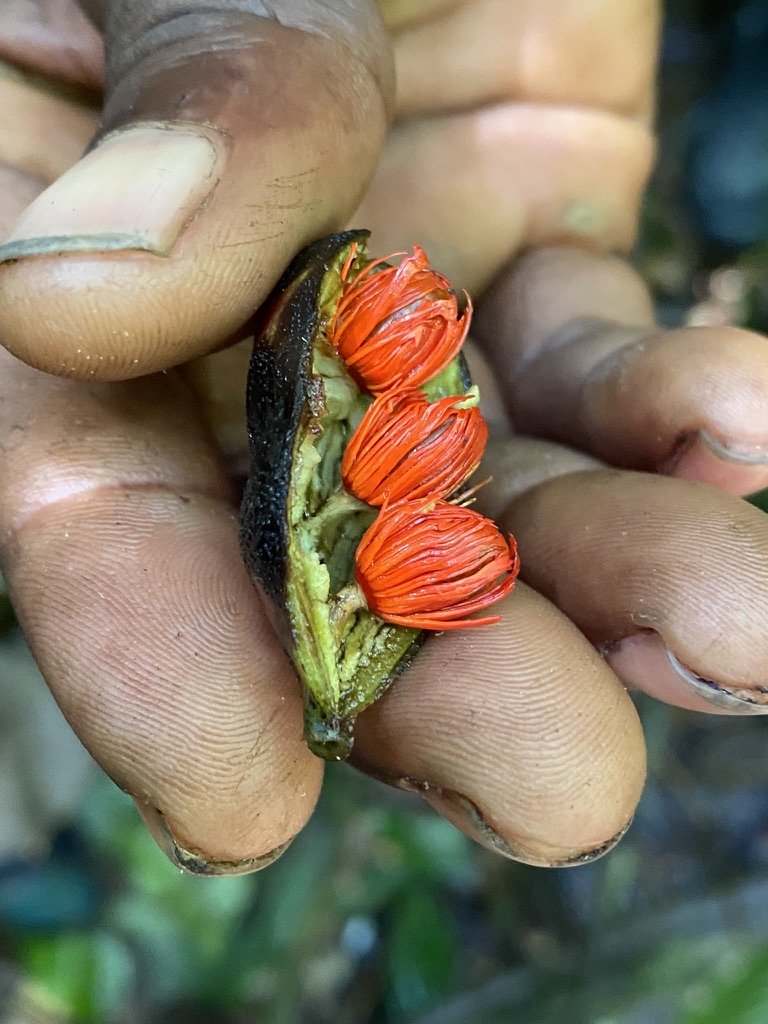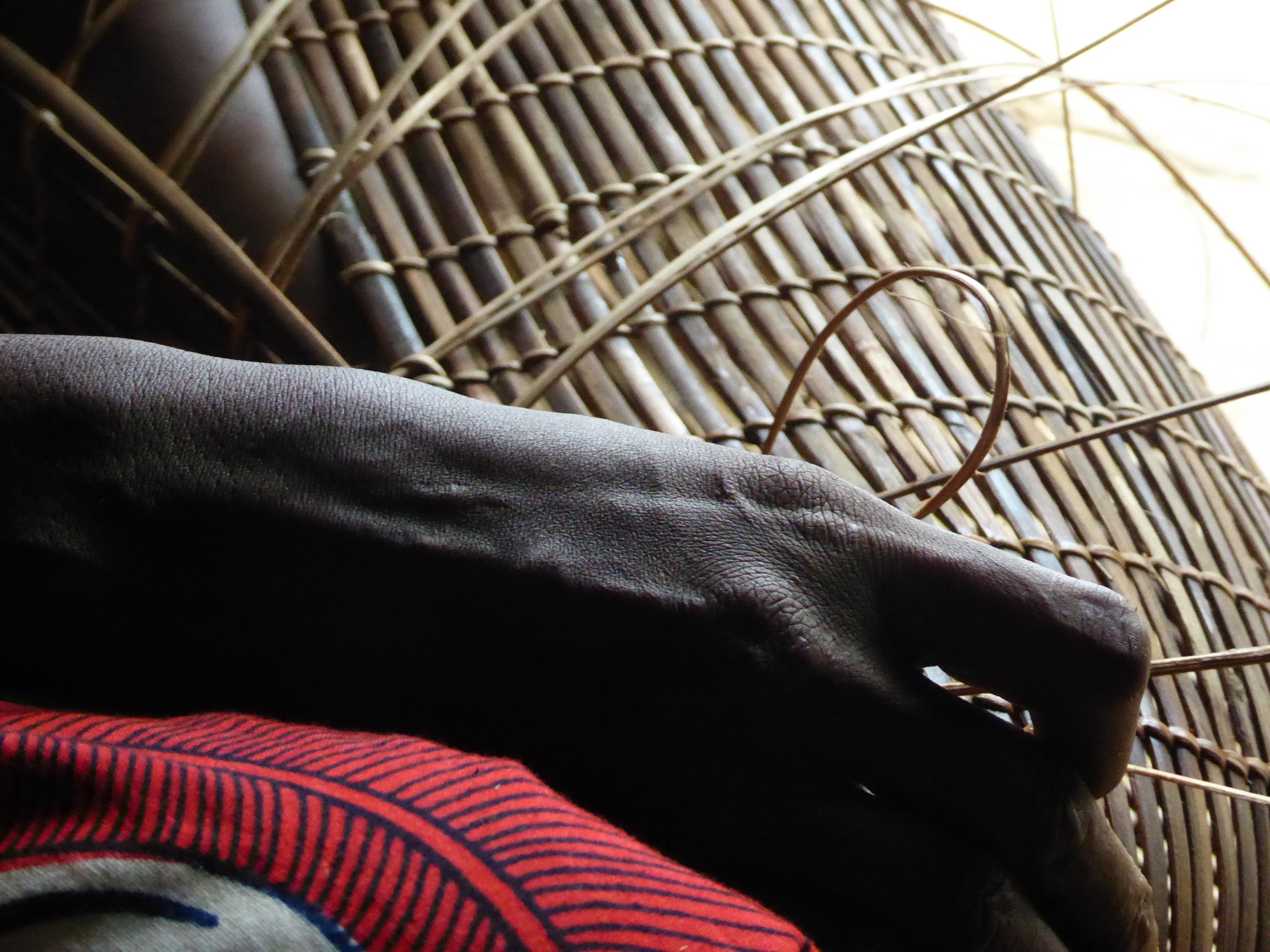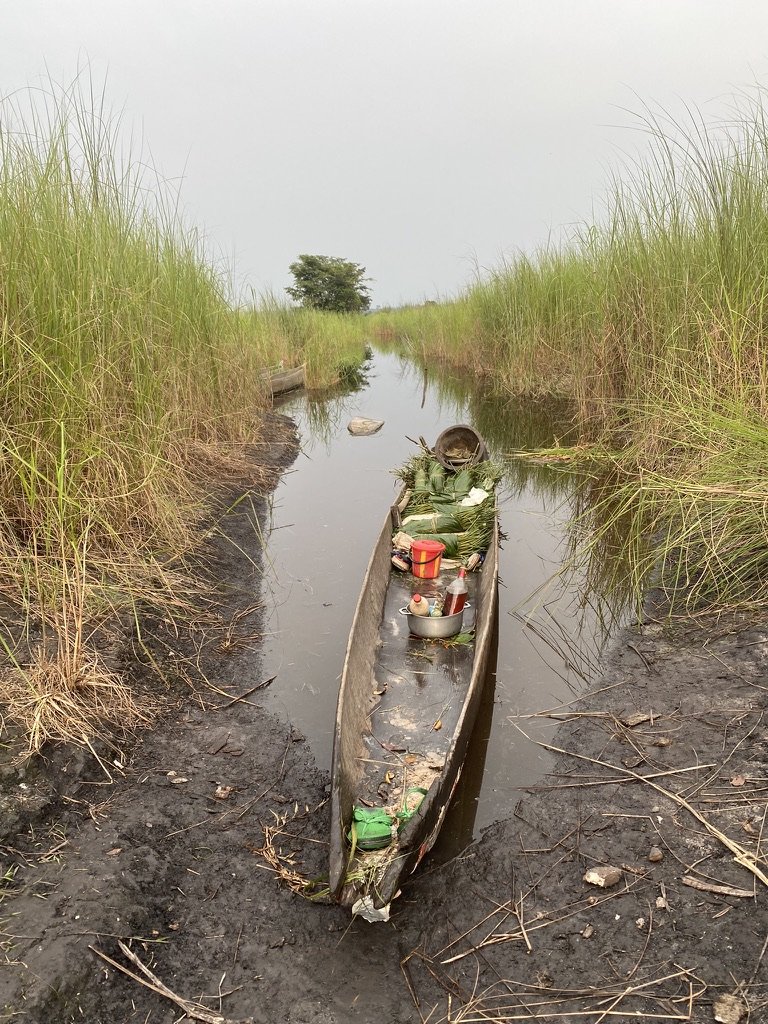For the last several years of my Ph.D., I have been studying gorilla ecology and conservation in the swamp-dominated forests of the Congo Basin. My research has been based at the Lac Télé Community Reserve, a protected area known to harbor one of the highest densities of western lowland gorillas and situated amidst the largest expanse of tropical peatlands in the world. The site also remains the Republic of Congo’s only designated community-based protected area with over 20,000 people living within its boundaries.
My dissertation research uses transdisciplinary methods to understand the relationships between great apes, local communities, the swamp forest, and conservation management across space and time.
I have conducted research in Madagascar, Indonesia, and the Republic of Congo, largely focused on primates, people, and their shared environments. In each place, I’ve worked closely with the local and Indigenous communities of my study sites to co-produce knowledge that can be applied to conservation efforts that benefit people and wildlife.
Research
Photo: Wildlife Conservation Society Congo Tropical Peat Swamp Forests
In both Kalimantan (Indonesian Borneo) and the Republic of Congo, I have worked in tropical peat swamp forest ecosystems.
These are wetland forests where waterlogged soils have created oxygen-poor environments, inhibiting decomposition and leading to the buildup of organic matter like leaf litter over time. Peat is known to store high amounts of carbon. Consequently, peat swamp forests — like wetland ecosystems more broadly — have been increasingly recognized as essential in helping combat climate change.
These unique, water-logged tropical forests are also considered refuge habitats for many rare and endangered species, including primates.
Dissertation Research: In my Ph.D. research, I approach the swamp forest environment as a unique biocultural system where the spatial and temporal flows of water create diverse yet interconnected patchworks of social, political, and ecological relationships. I use methods from primate ecology together with those from environmental anthropology to investigate these relationships at my study site.
Ecological Research Methods
PHENOLOGY: Phenology is the study of biological cycles, most often used in reference to the study of plant leafing, flowering, and fruiting patterns. Since many primate species are frugivorous or folivorous but have highly flexible diets and live in tropical forests with distinct wet and dry seasons, knowing what is available for an animal to eat and when is very important. For this reason, phenology studies often become the backbone of long-term primate research sites, giving researchers critical insights on the ecology and conservation of a species. Phenology studies also provide baseline measurements from which to monitor environmental change.
At Lac Télé, my research team and I established phenology transects and forest plots in four of the reserve’s forest subtypes: hardwood swamp forest, dry forest, raphia-dominated swamp forest, and seasonally flooded forest. During this process, we relied on the botanical expertise of local elders to identify plant species and determine which species of fruting trees were eaten by great apes. Subsequently, we trained local teams in villages adjacent to these monitoring sites in data collection methods, making sure to include both village elders and youth on each team to facilitate intergenerational knowledge transmission. For one year, they scored the amount of fruit, leaves, and flowers present on over 700 trees known to be important in the diets of great apes.
*To see some great photos and stories about my phenology project and the reserve more broadly, check out Thomas Nicolon's Instagram page! (the first photo above is his).DIETARY ECOLOGY:To complement our monitoring of fruit availability across the reserve, each research team collected gorilla and chimpanzee fecal samples during transect walks. These samples were then sequenced using a DNA metabarcoding approach which allows us to identify the plant species present in each sample. We aim to see what role fruit species play in the diets of these sympatric large-bodied mammals relative to its seasonal abundance across the habitat.
ETHNO-ECOLOGY: At Lac Télé, great apes cannot be habituated as they are in other protected areas due to their accessibility to hunters. Thus, despite the reserve serving as a great ape stronghold, few traditional observational methods can be used to understand why they thrive in a seasonally-flooded and human-inhabited swamp forest. Below, I explain the large part of my research that engaged social science methods. While our qualitative work in Lac Télé’s local communities covered a wide range of themes and issues, one of the primary goals of my research was to understand the ecology of gorillas and chimpanzees from the perspective of the people who have lived alongside them for generations. This meant that I asked people across the reserve not only what their relationship was to these animals, but moreover what they knew about their behaviors, interactions with other species, and other ecological questions.
The people living in the reserve retain livelihoods that are tightly linked to the forest and river’s natural resources. With little dry land available for cultivation in the swamps, most people practice a mix of fishing, hunting, gathering, and small-scale farming. The majority of the population have deep ancestral ties to the reserve’s land and have detailed knowledge of the plants, animals, and processes of the forests surrounding their villages. That knowledge, however, is being lost rapidly — a process that began during the colonial period with the introduction of Western religions and the demonization of traditional practices. It continues today due to the increasing pressures of globalization (development, market integration…) and climate change.
Qualitative Research Methods
COMMUNITY ETHNOGRAPHY: For two to four months, I (and often my Congolese student collaborator, Tiriel, pictured in the first and third photos above) lived in the villages adjacent to where we had established our phenology monitoring programs. I participated in the day-to-day activities of village members and carried out semi-structured interviews and focus groups (either in French or using a local translator for Lingala or Bomitaba). Interviews covered a wide range of topics aimed at understanding people’s place-based identities and changing relationships to the reserve’s lands, wildlife, and management bodies.
INSTITUTIONAL ETHNOGRAPHY: As I spent time in the reserve’s local villages, it became more and more apparent that the relationship between communities and reserve managers was fraught with tension and conflict. To get a more holistic perspective on these political issues, I began incorporating interviews with individuals implicated broadly in the reserve’s governance. These included staff of the NGOs and the Congolese State who were or had been involved at Lac Télé since its creation as a protected area in 2001.
ARCHIVAL RESEARCH: Tiriel and I also spent time in the French Colonial archives in Aix en Provence, France, to gain insight into how relationships between natural resources, local communities, and political administrators in Lac Télé’s swamp forest region had functioned before the arrival of conservation as a management paradigm.
In concert, these qualitative data have given us a comprehensive look into the competing perspectives and valuations of the Congo Basin’s swamp forests by diverse resource users over the last century.
Check out more photos from my research in tropical peat swamp forests
These photos and more can also be found on my Instagram page, accompanied by stories and explanations!



































Research Team
-

TIRIEL LOKOKA NGOMA
Tiriel is a Ph.D. student at Marien Ngouabi University in the Republic of Congo and is my main collaborator on my dissertation project. Like me, she is enrolled in a joint program between anthropology and forestry. Her own dissertation will examine natural resource governance by Lac Tele’s communities.
-

BOLA MADZOKE
Bola has been an integral collaborator on this project since I made my first visit to Lac Tele in 2019. A native of the reserve, he has also served as an ecologist for the reserve’s management team for over 25 years.







